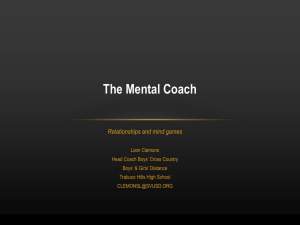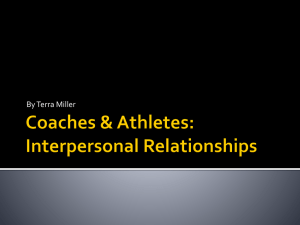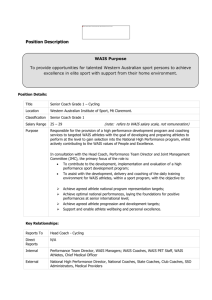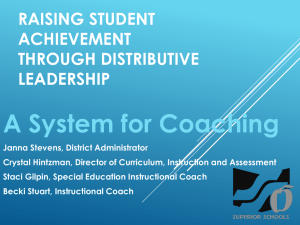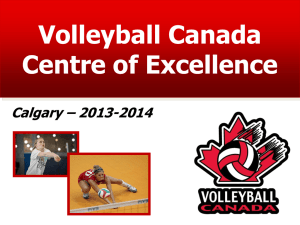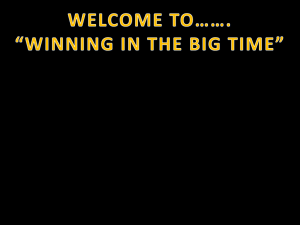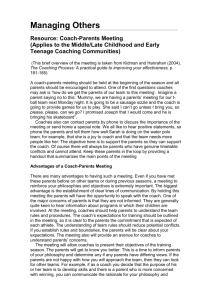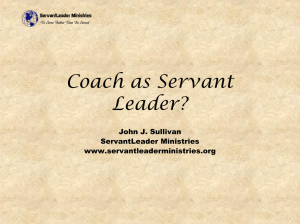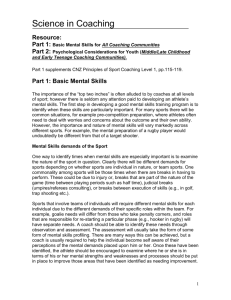Liability and negligence in Coaching
advertisement
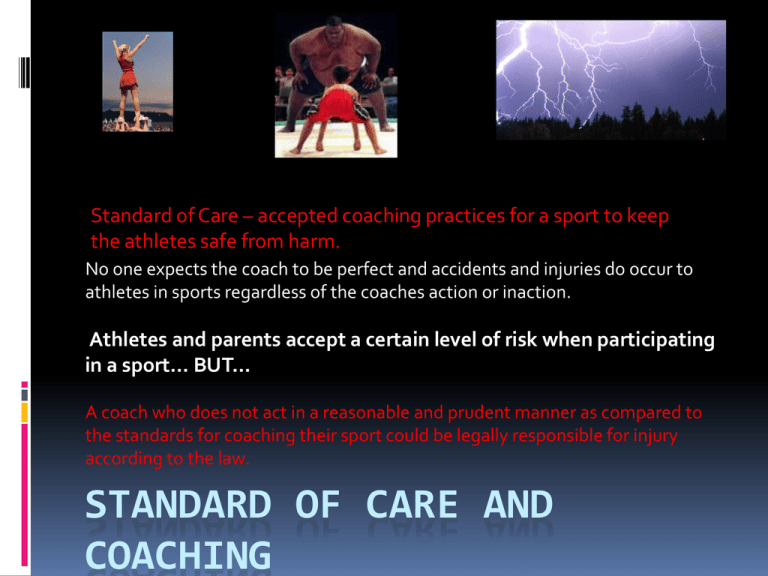
Standard of Care – accepted coaching practices for a sport to keep the athletes safe from harm. No one expects the coach to be perfect and accidents and injuries do occur to athletes in sports regardless of the coaches action or inaction. Athletes and parents accept a certain level of risk when participating in a sport… BUT… A coach who does not act in a reasonable and prudent manner as compared to the standards for coaching their sport could be legally responsible for injury according to the law. STANDARD OF CARE AND COACHING Coaches have a legal obligation to provide a safe environment for athletes! This applies to all coaches regardless of experience, employment or sport! Coaches are expected to manage the risks of their sport according to accepted practice! LIABILITY AND NEGLIGENCE IN COACHING A Coach is Negligent when all four of the following occur: 1. A duty of care exists with the athlete 2. That duty imposes a standard of care the coach does not meet 3. An athlete or some other person is harmed 4. The failure of the coach to meet the standard, either through action or inaction, can be shown to have caused the harm Standard of Care is what the coach should do in a given situation. These standards are decided by experienced coaches and sport bodies policies. NEGLIGENCE AND COACHING Liability Liability refers to responsibility for an injury In sport, the coach can be held liable if by their negligence one of their athletes is hurt The school or sport agency may also be held liable if they did not adequately check the coach’s credentials or give proper training Waivers are documents that participants sign to waive liability should they get hurt (may not hold up in court though) Coaching: Managing Risk As a coach you can manage the risk by: 1. Retain the risk – do nothing as the risk is minor and so are the consequences (sprains…) 2. Reduce the risk – take measures to reduce the likelihood of injury or minimize the consequences by use of proper equipment, training, first aid protocols in place 3. Transfer the risk – through waivers or contracts 4. Avoid the risk – coach decides activity too dangerous and avoids anything causing the risk Make Safety a priority in Your Coaching Safe Practice Standards for Coaches: 1. Use common sense, know and follow accepted safety practices for your sport (thunder/lightning…) 2. Follow and enforce guidelines set out by your sport organization for safe practices and transportation (ie visors, body checking, trip forms, etc) 3. Prepare for the risks inherent to your sport and athletes (tackling in football) 4. Supervise your drills (keep under control and watch for danger) 5. Have an EAP and medical kit ready 6. Plan appropriate warms ups before the start of practices and games 7. Know the fitness and skill levels of your athletes and plan practices and competition to match 8. Ensure the facility/environment is safe (check fields for obstacles…) 9. Check equipment –make sure it fits, teach athletes to use it correctly and enforce Negligence and Liability Assignment Describe 2 different sport scenarios to show your understanding of Negligence by a coach. 1. Make up a scenario where an athlete is injured and the coach is negligent and liable. 2. Make up a scenario where an athlete is injured but the coach is not negligent or liable. Be sure to describe the circumstances in each case and explain why they would or would not be negligent.
